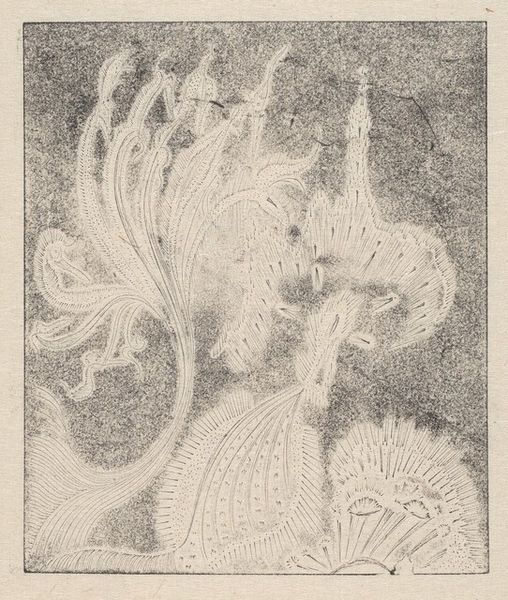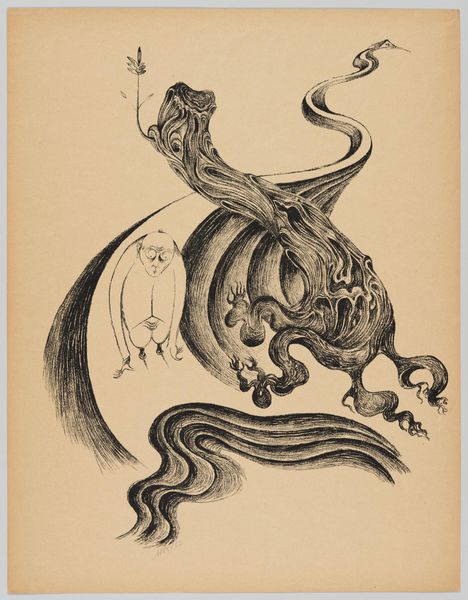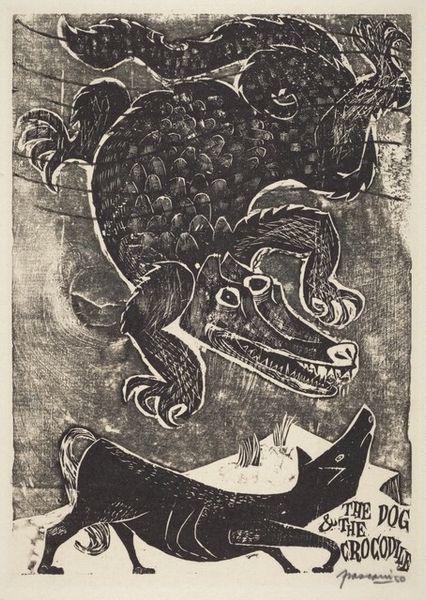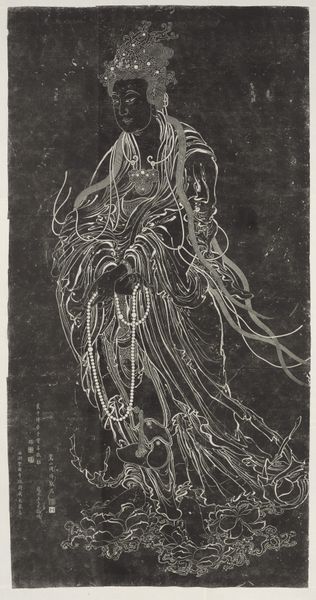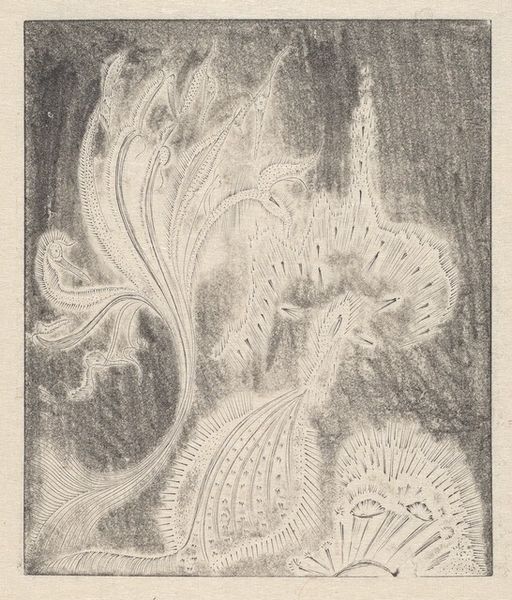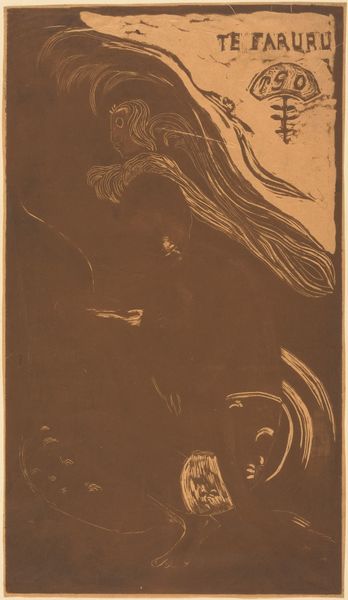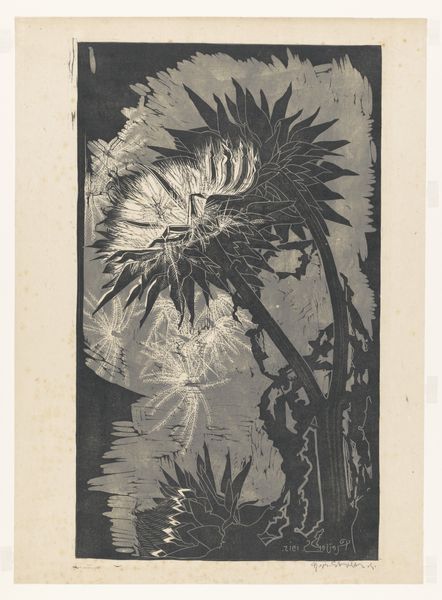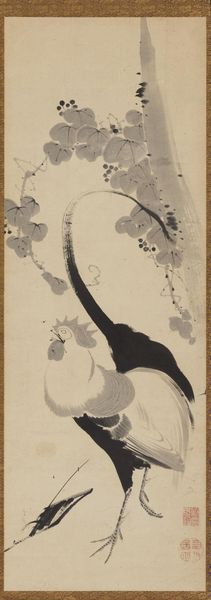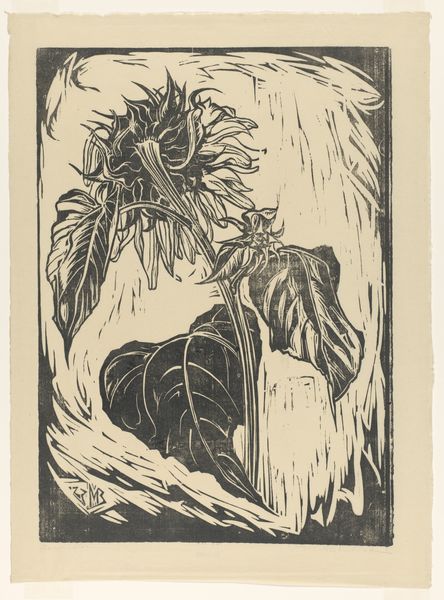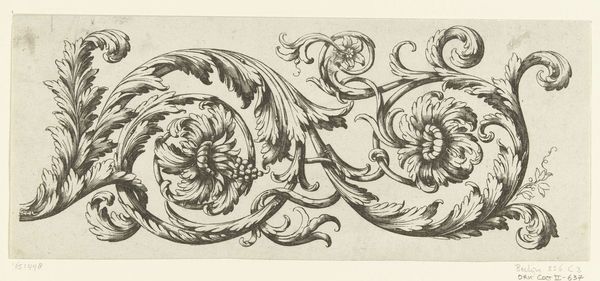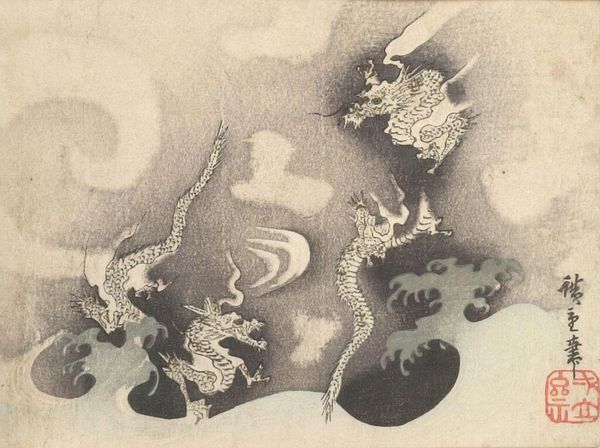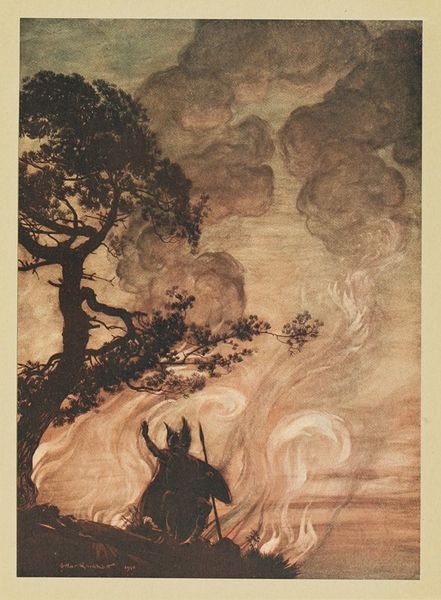
print, woodcut
#
art-nouveau
# print
#
geometric
#
woodcut
#
abstraction
Dimensions: image: 16.6 x 15.1 cm (6 9/16 x 5 15/16 in.)
Copyright: National Gallery of Art: CC0 1.0
Curator: This woodcut, created by M.C. Escher in 1918, is titled "Sunflowers." The contrasting light and dark areas immediately capture the eye. What's your initial response? Editor: A powerful graphic statement. The boldness of the woodcut lends it a kind of stark beauty, but there's also a feeling of... something decaying, almost aggressive, rather than a celebration of nature. The thick, spiky petals and almost skeletal rendering of the leaves. Curator: Interesting that you interpret aggression in it. It comes from Escher’s early period, a time of intense artistic exploration and social upheaval in Europe. You know Escher, primarily, through his later geometric works but here he seems interested in the psychological experience of looking at the world at the end of World War One. The image plays on the idea of a sunflower, something seen as natural and warm, in a period when the war itself must have had an enormous impact. Editor: Absolutely. Beyond the contextual factors, the sunflower, historically and across cultures, carries heavy symbolism—fertility, warmth, even devotion due to its sun-following nature. It could be viewed as a deliberate contradiction, undermining a common positive trope by expressing a deeper psychological burden and angst by choosing abstraction over reality. It's a statement about lost hope, broken promises. The geometric, near-mechanical rendering drains away much of that organic, life-affirming quality associated with sunflowers. Curator: I think that interpretation fits with what Escher may have intended. It questions easy or popular cultural associations and instead situates nature as equally, if not more impacted by loss and trauma. There's a distinct absence of light. Editor: And that center—like an abstracted sun or a swirling void, drawing us in, holding onto a powerful ambivalence. A woodcut by someone better known for mind-bending math visuals. Fascinating. Curator: Absolutely, "Sunflowers" pushes us beyond any easy sense of art nouveau. A symbolic flower refracted through a wartime experience to reveal the fragility and contingency of life, challenging simple perceptions. Editor: Exactly, leaving a stark afterimage long after we've looked away. A kind of cultural haunt.
Comments
No comments
Be the first to comment and join the conversation on the ultimate creative platform.
